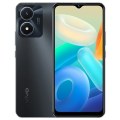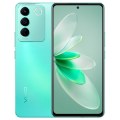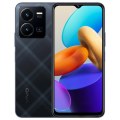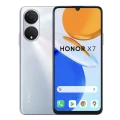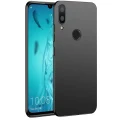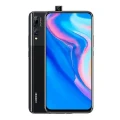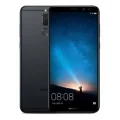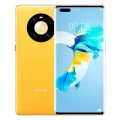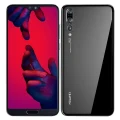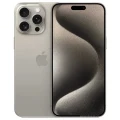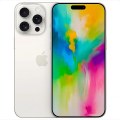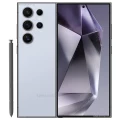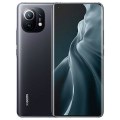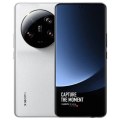Vivo Y91
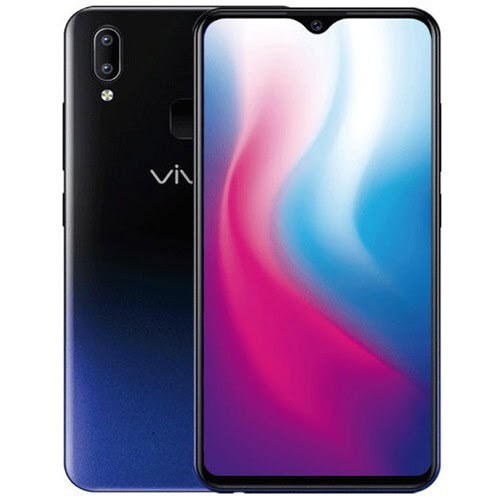


Vivo Y91 Price in Bangladesh
The Vivo Y91 Price in Bangladesh is BDT 14,990. This smartphone features a 6.22-inch IPS LCD display and is powered by a 1.95 GHz Quad-core processor. It offers 3GB of RAM and 32GB of internal storage, expandable up to 128GB with external storage. The Vivo Y91 has a dual rear camera setup with a 13 MP primary sensor and a 2 MP secondary sensor, along with an 8 MP front camera. It is equipped with a 4030 mAh Li-Ion battery, providing standard battery life. The Vivo Y91 Price in Bangladesh highlights its balanced features and affordability.
Specifications
General
| Model | Vivo Y91 |
| Announced | 2018, November |
| Released | 2018, November |
| Status | Available |
Design
| Dimensions | 155.1 x 75.1 x 8.3 mm (6.11 x 2.96 x 0.33 in) |
| Weight | 163.5 g (5.78 oz) |
| Colors |
Starry Black, Ocean Blue |
Network
| Technology | GSM / HSPA / LTE |
| 2G Network |
GSM 850 / 900 / 1800 / 1900 - SIM 1 & SIM 2 |
| 3G Network |
HSDPA 850 / 900 / 2100 |
| 4G Network |
LTE |
| GPRS <strong>GPRS</strong> (General Packet Radio Service) is a packet oriented mobile data service on the 2G and 3G cellular communication system's global system for mobile communications (GSM), Generally, GPRS is used for the purpose of wireless data transfer, such as sharing pictures and videos or browsing the Internet via a mobile phone connection. | |
| EDGE <strong>EDGE</strong> (Enhanced Data GSM Environment) is a wireless network technology generally considered the next step in the 2G network offers data transfer rates up to four times faster than ordinary GSM networks, Generally, EDGE is used for the purpose of wireless data transfer, such as sharing pictures and videos or browsing the Internet via a mobile phone connection. | |
| Speed | HSPA 42.2/5.76 Mbps, LTE Cat5 150/75 Mbps |
Display
| Display Type <strong>Display Technology => </strong> A number of display technologies and types used in mobile phones => TFT (Thin Film Transistor), IPS (In-Place Switching), OLED (Organic Light Emitting Diode), AMOLED (Active-Matrix Organic Light-Emitting Diode), Super AMOLED (an even advanced version of AMOLED), Resistive Touchscreen (Resistive touchscreens contain two layer of conductive material with a very small gap between them which acts as a resistance), Capacitive Touchsceen (Capacitive touchscreen technology consists of a layer of glass coated with a transparent conductor) | IPS LCD capacitive touchscreen, 16M colors |
| Size | 6.22 inches, 96.6 cm2 (~82.9% screen-to-body ratio) |
| Resolution | 720 x 1520 pixels, 19:9 ratio (~270 ppi density) |
Camera
Main camera
| Camera Setup | Dual |
| Primary <strong>Camera</strong> is able to capture photographs and usually videos, The most important characteristics of a camera are the resolution (measured in megapixels), lens focus type (fixed or automatic), higher megapixel cameras are known to capture higher quality photos, but not always a good measurement of the photos quality. |
13 MP, f/2.2, PDAF 2 MP, f/2.4, depth sensor |
| Features |
LED flash, panorama |
| Video | 1080p@30fp |
Selfie camera
| Camera Setup | Single |
| Primary <strong>Camera</strong> is able to capture photographs and usually videos, The most important characteristics of a camera are the resolution (measured in megapixels), lens focus type (fixed or automatic), higher megapixel cameras are known to capture higher quality photos, but not always a good measurement of the photos quality. |
8 MP, f/2.0 |
Hardware
| Chipset <strong>Chipset</strong> is a group of integrated circuits designed to perform one or a more dedicated functions, often with real time computing constraints, Popular smartphones are equipped with more advanced embedded chipsets that can do many different tasks depending on their programming. | Qualcomm SDM439 Snapdragon 439 (12 nm) |
| CPU <strong>CPU</strong> (Central Processing Unit) mostly known as processors, CPU processes instructions in order to carry out certain functions that make your device operate properly. Processors are often described as the brain of computers, smartphones and tablets, Smartphones and tablets rely on processors to carry out their every task, Processors are an incredibly important factor in selecting any type of computing device, including your smartphone. | Octa-core (2x1.95 GHz Cortex-A53 & 6x1.45 GHz Cortex A53) |
| GPU <strong>GPU</strong> (Graphics Processing Unit) is a single-chip processor designed to rapidly manipulate and alter memory to accelerate the creation of images in a frame buffer intended for output to a display, This includes things such as lighting effects, object transformations, and 3D motion. | Adreno 505 |
| RAM (Memory) <strong>RAM</strong> (Random Access Memory) is a type of computer memory that can be accessed randomly, any byte of memory can be accessed without touching the preceding bytes that allows information to be stored and accessed quickly from random locations. RAM is the most common type of memory found in computer systems, smartphones, tablets and other electronic devices. | 3 GB RAM |
| Internal Storage <strong>Internal Storage</strong> is a data storage space (flash memory) mostly used in smartphones, tablets and other electronic devices where operating system, apps, music, photos, videos, files and other user data Is stored. | 32 GB |
| Sensors <strong>Sensors</strong> are electronic components that detects and responds to some type of input from the physical environment. The specific input could be light, heat, motion, moisture, pressure and location, The output is generally a signal that is converted to use in computing systems, a location sensor, such as a GPS receiver is able to detect current location of your electronic device. |
Fingerprint - (rear-mounted), accelerometer, proximity, compass |
Connectivity
| Bluetooth <strong>Bluetooth</strong> is a wireless communications technology for exchanging data between mobile phones, headsets, computers and other network devices over short distances without wires, Bluetooth technology was primarily designed to support simple wireless networking of personal consumer devices. | 4.2, A2DP, LE |
| Infrared <strong>Infrared</strong> connectivity is an old wireless technology used to connect two electronic devices. It uses a beam of infrared light to transmit information and so requires direct line of sight and operates only at close range. | |
| USB | microUSB 2.0, USB On-The-Go |
| GPS <strong>GPS</strong> The Global Positioning System is a satellite-based radio navigation system, GPS permits users to determine their position, velocity and the time 24 hours a day, in all weather, anywhere in the world, In order to locate your position, your device or GPS receiver must have a clear view of the sky. | Yes, with A-GPS, GLONASS, BDS |
| NFC <strong>NFC</strong> (Near field communication) is a set of standards for smartphones and similar devices to establish peer-to-peer radio communications with each other by touching them together or bringing them into proximity, usually no more than a few inches. |
Battery
| Battery Type <strong>Battery Type => </strong> Cell phones run on various kinds of batteries depending on the manufacturer, phone size or shape and features. There are basically four types of cell phone batteries => Lithium Polymer, Lithium Ion, Nickel Metal Hydride and Nickel Cadmium. | Non-Removable Li-Po |
| Capacity <strong>Battery Capacity</strong> is a measure (typically in Amp-hr) of the charge stored by the battery, and is determined by the mass of active material contained in the battery. The battery capacity represents the maximum amount of energy that can be extracted from the battery under certain conditions. | 4030 mAh battery |
Vivo Y91 Review – Is It the Best Budget Smartphone for You?
In today’s fast-paced digital world, finding a smartphone that offers great features without breaking the bank can be quite a challenge. Enter the Vivo Y91, a budget-friendly smartphone that’s been making waves in the market. For tech enthusiasts, smartphone shoppers, and existing Vivo users, a detailed review is essential to understand if this device is truly worth considering. This post will dissect every aspect of the Vivo Y91, from its design to its value for money, to help you make an informed decision.
Design and Display
Sleek Design and Build Quality
The Vivo Y91 impresses right out of the box with its sleek design and solid build quality. Available in striking colors like Ocean Blue and Starry Black, the phone boasts a glossy gradient finish that adds a premium touch. The rounded edges and slim profile make it comfortable to hold, even for extended periods.
High-Quality Display
When it comes to the display, the Vivo Y91 doesn’t disappoint. It features a 6.22-inch Halo FullView Display with a resolution of 720×1520 pixels. While it’s not Full HD, the screen still delivers vibrant colors and decent sharpness. Watching videos and playing games on this display is a pleasant experience, thanks to its good contrast and brightness levels.
Overall Viewing Experience
The Vivo Y91’s display also comes with an 88.6% screen-to-body ratio, providing an immersive viewing experience. Whether you’re streaming your favorite shows or browsing social media, the minimized bezels ensure you get more screen real estate. The IPS LCD panel offers wide viewing angles, making it easy to share content with friends and family.
Performance and Battery Life
Robust Performance
Under the hood, the Vivo Y91 is powered by the MediaTek Helio P22 processor, coupled with 2GB of RAM and 32GB of internal storage. While this setup may not compete with high-end smartphones, it handles everyday tasks smoothly. Apps open quickly, and multitasking is relatively lag-free, making it suitable for users who need a reliable device for daily use.
Impressive Battery Life
One of the standout features of the Vivo Y91 is its 4030mAh battery. This large battery ensures you can go through an entire day of moderate to heavy use without worrying about running out of juice. Whether you’re streaming videos, playing games, or browsing the web, the battery holds up remarkably well.
Efficient Charging Speed
Charging speed is another area where the Vivo Y91 shines. Although it doesn’t support fast charging, the phone’s efficient power management means you can get a decent charge in a short amount of time. A full charge takes around two hours, which is acceptable for a device in this price range.
Camera Quality
Dual Camera Setup
The Vivo Y91 features a dual-camera setup on the back, consisting of a 13MP primary sensor and a 2MP depth sensor. This combination allows for decent photo quality, especially in well-lit conditions. The depth sensor helps create a pleasing bokeh effect for portrait shots, adding a professional touch to your photos.
Photo Quality in Various Lighting Conditions
In good lighting, the Vivo Y91 captures detailed and vibrant images. The colors are accurate, and the dynamic range is satisfactory. However, the camera does struggle a bit in low-light conditions. Images tend to have some noise and lack the sharpness you’d get from more expensive smartphones. Still, for a budget phone, the camera performance is commendable.
Video Capabilities
When it comes to video recording, the Vivo Y91 can shoot in 1080p at 30fps. The video quality is decent, with good color reproduction and stability. However, like the still camera, the video camera performs best in well-lit environments. Low-light video recording can be a bit grainy, but it’s still usable for casual shooting.
User Experience and Software
Intuitive User Interface
The Vivo Y91 runs on Funtouch OS 4.5, based on Android 8.1 Oreo. While it’s not the latest version of Android, the user interface is intuitive and user-friendly. The home screen is easy to customize, and navigating through the menus is straightforward. Pre-installed apps include the usual suite of Google apps, as well as some useful Vivo-specific tools.
Customization Options
Funtouch OS offers a range of customization options, allowing users to personalize their experience. You can change themes, wallpapers, and even the layout of the home screen. There’s also a handy Smart Split feature that lets you multitask by running two apps side by side, making the most of the large display.
Software Updates and Support
Vivo is known for providing regular software updates, and the Y91 is no exception. While it may not get the latest Android updates as quickly as flagship models, the phone receives timely security patches and bug fixes. Vivo’s customer support is also reliable, ensuring you get assistance when needed.
Value for Money and Conclusion
Competitive Price Point
One of the biggest selling points of the Vivo Y91 is its affordability. Priced competitively in the budget smartphone market, it offers a lot of value for the money. You get a stylish design, decent performance, a good camera, and excellent battery life—all without breaking the bank.
Key Features Recap
To summarize, the Vivo Y91 stands out for several reasons:
- Design and Display: Sleek design with a vibrant 6.22-inch display.
- Performance: Reliable daily performance with the MediaTek Helio P22 processor.
- Battery: Long-lasting 4030mAh battery.
- Camera: Dual-camera setup with good photo and video capabilities.
- User Experience: Intuitive interface with plenty of customization options.
Should You Buy the Vivo Y91?
If you’re looking for a budget-friendly smartphone that doesn’t compromise on essential features, the Vivo Y91 is a solid choice. It’s perfect for tech enthusiasts who want a reliable device, smartphone shoppers on a budget, and existing Vivo users looking to upgrade.
Don’t just take our word for it—experience the Vivo Y91 yourself and see why it’s making waves in the market. Share your thoughts and join the conversation with other Vivo users today!
